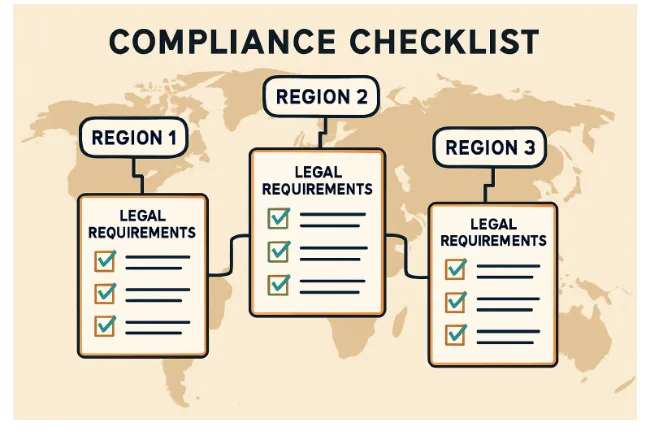How to Read Market Momentum Accurately with the QQE Mod Indicator
Understanding momentum is one of the most powerful skills in trading. Markets move in waves — driven by strength, volume, and volatility — but identifying when that strength shifts isn’t always easy. Many traders rely on traditional tools like RSI or MACD, yet they often struggle to catch early reversals or overextended moves.
That’s where the QQE Mod Indicator — or Quantitative Qualitative Estimation Mod — enters the picture. It’s a refined version of RSI designed to smooth out market noise and track volatility with precision, helping traders read real momentum instead of reacting to false signals.
🧩 What the QQE Mod Indicator Really Measures
The QQE Mod Indicator converts RSI values into a smoothed momentum signal that reacts to both price strength and volatility.
It uses two key components:
- Main QQE Line: represents adjusted RSI strength.
- Signal Line: adapts based on market volatility and smoothing factors.
When the main line crosses above the signal line, momentum shifts upward; when it crosses below, weakness begins. The distance between them indicates the strength of the momentum.
Unlike traditional momentum indicators, QQE adjusts itself dynamically — meaning it adapts to changing volatility rather than breaking during unpredictable spikes.
⚙️ Why Accuracy Matters in Reading Momentum
Momentum analysis isn’t just about direction — it’s about timing. A trader who identifies a shift early can catch the bulk of a trend. A trader who reacts late usually enters after the move has matured.
That’s why modern traders are focusing on tools like QQE Mod:
- It filters out false entries during choppy sessions.
- It adjusts to volatility expansion automatically.
- It offers clearer confirmation for day trading and swing trading setups.
Essentially, QQE reads the “heartbeat” of the market — showing when a move is running out of energy or gathering strength again.
💡 How to Use the QQE Mod Indicator Correctly
To use QQE effectively, traders need a structured approach.
Here’s a simple guide on how to use qqe mod indicator for accurate market reading:
- Add QQE Mod to your chart — Most trading platforms (like MT4, TradingView, or TWM’s desktop software) support it.
- Identify crossover signals — The first crossover shows a possible direction shift.
- Combine with a trend filter — Use tools like moving averages or Bollinger Bands for additional confirmation.
- Adjust sensitivity — Shorter smoothing for fast markets; longer for stable trends.
- Validate with volume and structure — Don’t rely on QQE alone; always look for confluence.
Following this disciplined approach helps traders stay objective and data-driven — key to consistent momentum trading.
⚠️ Why Traders Misread QQE and Lose Momentum
Even with accurate indicators, mistakes often come from misuse. Common errors include:
- Using QQE on very short timeframes, leading to overtrading.
- Ignoring volatility context — not all crossovers are meaningful.
- Failing to combine QQE with broader market analysis.
A detailed discussion on this topic can be found in Why Traders Fail with the QQE Indicator — an in-depth breakdown of real-world errors traders make while applying QQE.
Avoiding these mistakes helps ensure QQE adds value to your analysis, instead of creating confusion.
📊 Reading Market Momentum Step-by-Step
To interpret market strength using QQE Mod:
- Observe the slope of the QQE main line — rising slope = acceleration, flat = slowdown.
- Watch the spacing between lines — wide = strong trend, narrow = weak trend.
- Compare readings to recent volatility — rising QQE during expanding volatility suggests real momentum.
- Confirm with price structure — higher highs with rising QQE indicate continuation; divergence signals potential reversal.
This layered approach transforms QQE from a simple indicator into a true momentum reading framework — ideal for data-backed decision-making.
🧭 Combining QQE with Trading Psychology
Technical indicators are only half the equation. Even with the best analysis, poor discipline can erase gains. Traders who rely solely on one tool — or enter based on emotion — often find themselves on the wrong side of volatility.
The QQE framework helps bring structure and logic to these decisions. When used correctly, it supports calm, consistent execution — especially when combined with automated trading systems or algorithmic setups.
Platforms like TWM integrate such indicators within local, downloadable environments, letting traders test, backtest, and analyze without delay or dependency on online scripts.
🧠 How QQE Helps Data-Driven Traders
- Better momentum clarity: Filters false RSI signals.
- Dynamic adaptability: Works across different markets (Forex, Crypto, Equities).
- Strategy testing: Allows traders to automate and compare results.
- Multi-timeframe precision: From 1-minute scalps to weekly swings.
With this flexibility, QQE Mod fits easily into broader data-driven trading systems, giving traders the confidence to trust numbers over emotion.
❓ FAQs
Q1. What’s the difference between QQE and QQE Mod?
The Mod version adds better smoothing and volatility adaptation, offering fewer false signals and sharper entries.
Q2. Can QQE Mod be used for both day and swing trading?
Yes, QQE Mod adapts across timeframes, making it suitable for both fast and long-term trading strategies.
Q3. How do I avoid common QQE mistakes?
Follow structured setups, confirm with trend filters, and review detailed guidance in Why Traders Fail with the QQE Indicator.
Q4. Does QQE replace RSI?
Not exactly — it’s an enhancement that makes RSI more reactive and less noisy.
🏁 Final Thoughts
Accurately reading market momentum isn’t about prediction — it’s about preparation. The QQE Mod Indicator allows traders to track volatility and trend strength with clarity, eliminating much of the guesswork that plagues emotional trading.
Those who take the time to understand how to use qqe mod indicator correctly — and learn from Why Traders Fail with the QQE Indicator — position themselves ahead of most retail traders.
With the right balance of logic, patience, and testing, QQE becomes not just another line on the chart — but a dependable tool for navigating uncertainty in fast-changing markets.
Media Contact
Company: Asko SA
Contact Person: Martina Castro
Website: https://twm.one/
Telephone: +41 76 476 5208




